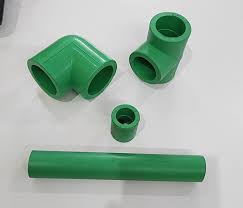Oct . 03, 2024 15:18 Back to list
hdpe to pvc transition coupling products
Transition Couplings HDPE to PVC
Transition couplings are essential components in plumbing and piping systems, particularly when connecting different types of materials. One common scenario is the transition from High-Density Polyethylene (HDPE) to Polyvinyl Chloride (PVC). Each material has unique properties that make it suitable for specific applications, and understanding how to efficiently transition between them is crucial for ensuring the integrity and longevity of the pipeline.
HDPE is renowned for its high strength-to-density ratio, making it an excellent choice for applications that require durability and flexibility. Its resistance to corrosion and chemicals allows it to perform effectively in various environments, from agricultural irrigation systems to municipal water lines. Additionally, HDPE’s lightweight nature makes installation easier and reduces transportation costs. However, when it comes to connecting HDPE pipes to PVC systems, which are widely used in drainage, sewer, and vent piping due to their low cost and high resistance to corrosion, a reliable transition coupling is needed.
PVC, on the other hand, is characterized by its rigidity and excellent tensile strength. While it can withstand high pressures, it is more brittle than HDPE. This difference in material properties necessitates careful consideration during installation to prevent issues such as cracking or leaking. Transition couplings serve as a bridge between these two materials, addressing their distinct mechanical properties and ensuring a leak-proof connection.
When selecting a transition coupling for HDPE to PVC, factors such as pipe diameter, pressure rating, and environmental conditions must be considered. Generally, these couplings are designed with one end compatible with HDPE and the other with PVC, making them versatile for various applications. They often feature a robust sealing mechanism, such as rubber gaskets or O-rings, which enhances the seal tightness and helps prevent leaks.
hdpe to pvc transition coupling products

Installation of these transition couplings typically involves the use of specialized techniques. For HDPE pipes, fusion welding is commonly used to create a strong joint, while PVC pipes are usually connected using solvent cement or mechanical fittings. The coupling must be compatible with both joining methods, enabling a seamless integration that maintains the structural integrity of the entire system.
It’s also important to note that improper installation or selection of the wrong coupling can lead to significant issues down the line. Ensuring proper alignment, secure fittings, and adherence to the manufacturer’s specifications are key steps in the installation process. Regular maintenance and inspection of joints can help identify potential problems early, ensuring that the transition coupling continues to perform optimally over time.
In recent years, advancements in manufacturing technology have introduced improved designs and materials for transition couplings, further enhancing their reliability and performance. Innovations such as flexible couplings and those made from advanced thermoplastics provide even greater resilience against environmental stresses, making them ideal for various applications.
In conclusion, transition couplings for HDPE to PVC connections play a critical role in the piping industry. By understanding the properties of both materials and the considerations required for a successful installation, contractors and engineers can ensure the longevity and efficiency of their piping systems. This careful consideration will ultimately lead to a dependable infrastructure that meets both current and future needs.
-
High-Quality PVC Borehole Pipes Durable & Versatile Pipe Solutions
NewsJul.08,2025
-
High-Quality PVC Perforated Pipes for Efficient Drainage Leading Manufacturers & Factories
NewsJul.08,2025
-
High-Quality PVC Borehole Pipes Durable Pipe Solutions by Leading Manufacturer
NewsJul.08,2025
-
High-Quality PVC Borehole Pipes Reliable PVC Pipe Manufacturer Solutions
NewsJul.07,2025
-
High-Quality UPVC Drain Pipes Durable HDPE & Drain Pipe Solutions
NewsJul.07,2025
-
High-Quality Conduit Pipes & HDPE Conduit Fittings Manufacturer Reliable Factory Supply
NewsJul.06,2025

